Hai Duong Every year, the 10-hectare farm with 600 ostriches brings Ms. Nguyen Thi Binh billions of dong from providing breeds, eggs, meat, sausages and ham.
Ms. Nguyen Thi Binh, 61 years old, in Minh Tan commune, Kinh Mon town, is one of two faces in Hai Duong province honored by the Central Committee of the Vietnam Farmers' Union as "Outstanding Vietnamese Farmer" in 2023.
Born into a farming family, at the age of 18, Mrs. Binh joined the armed police force and then was demobilized, working as a worker at Hoang Thach Cement Factory. With the desire to get rich, in 1994, Mrs. Binh quit her job to open a construction materials company with her husband. Thanks to hard work and luck, the couple had enough to eat and save.
At the end of 2005, Mrs. Binh went to an agricultural fair in Hai Phong and was given a brochure introducing the ostrich farming model. Seeing the large, wild animals being raised like chickens and ducks, Mrs. Binh was very curious and had the idea of following suit. However, four years later, Mrs. Binh was determined to change her family's production model to ostrich farming.
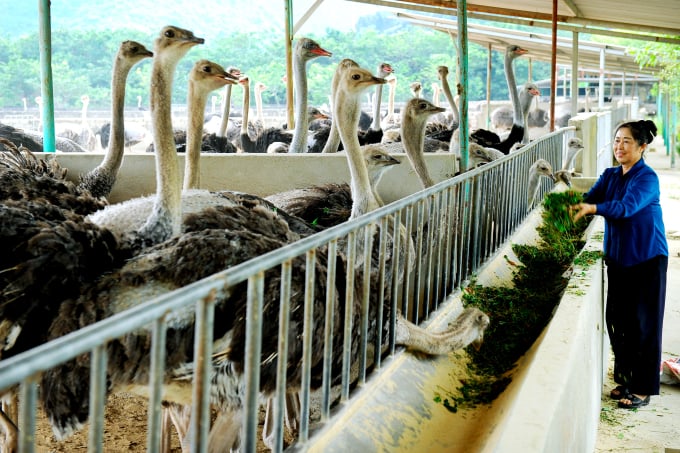
Ms. Binh owns an ostrich farm worth tens of billions of dong. Photo: NVCC
After many days of visiting and learning about breeding techniques at Thuy Phuong Poultry Research Center (Hanoi), Ms. Binh mobilized her family's capital and borrowed more to invest 5 billion VND to build a farm with 60 ostriches over three months old.
In the early days, Mrs. Binh faced fierce opposition from her husband. He thought that investing billions of dollars in raising wild animals originating from Africa was too risky. "I tried every way to stop her, but I could not overcome her will," Mr. Bui Van Hien, Mrs. Binh's husband, recalled.
Raising ostriches is not easy, farm workers are not used to handling and caring for them, so they are often kicked or run around, leading to broken legs. During Tet 2010, the sound of fireworks on New Year's Eve frightened the ostriches, causing them to jump out of their cages and run everywhere. The whole family and farm workers had to split up to look for them.
With perseverance, Ms. Binh and the farm workers gradually tamed the giant birds. "Now, whenever they see the workers' green shirts, the whole flock raises their heads to look for food instead of being aggressive or running away like before," said Ms. Vu Thi Huyen, who has been with the farm for more than 10 years.
The farm currently has about 200 ostriches of reproductive age, 400 commercial birds, raised in 20 cages of about 200 m2 each.
To give the ostriches space to run around, Ms. Binh arranged 30 ostriches in a cage, spread yellow sand on the floor, and had a food and water trough in front of the cage. Every day, workers had to clean the cage to ensure the ostriches did not accidentally eat foreign objects.
Although originating from the wild, ostriches are easy to raise, adapt well to the climate in the North, have few diseases, and can eat many types of weeds and bran made from rice flour and corn. To save costs and protect the environment, Ms. Binh built a closed farming model. Ostrich manure is used to fertilize plants, fish and duckweed, which are then used as food for them. Every day, an ostrich eats 1.5 kg of flour, 1 kg of grass and drinks 4 liters of water. During the breeding season, it eats more.
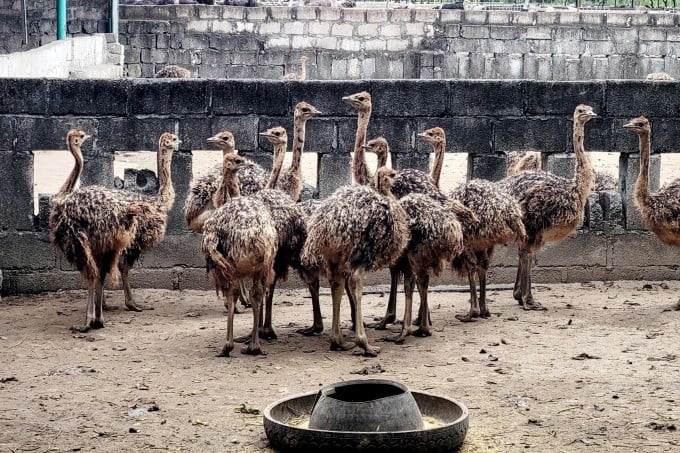
Ostrich breeding birds are sold for 1.5 million VND each. Photo: Le Tan
Not only providing breeds, eggs, and meat, Ms. Binh also processes ostrich ham and sausage into products that meet OCOP 4 quality standards. She even opened her own restaurant in Hai Duong City to introduce dishes made from ostrich.
Ms. Binh always works late at night on the farm to check each batch of cages and incubators. "I have maintained this habit since the early days of establishing the farm. With high-value livestock, a small mistake can cause hundreds of millions, even billions of dong to disappear overnight," she explained.
At the same time that Ms. Binh started building the farm, there were also people in Hai Duong who raised ostriches but went bankrupt. "I went there to ask them questions and learn from their experiences to avoid making the same mistakes," the farm owner said.
In 2020, Ms. Binh's ostrich farm earned more than 1.3 billion VND in profit, and in 2021 and 2022, it earned more than 2 billion VND. The farm, worth tens of billions of VND, also provides jobs for dozens of workers with salaries of 6-15 million VND.
"My wish is to create a center for breeding livestock with high economic value for people to come and learn and import livestock at low prices," said Ms. Binh, adding that in the near future she will expand the farm to 2,000 animals.
Mr. Hoang Minh Coi, Chairman of the Farmers' Association of Kinh Mon town, commented that Ms. Binh is "an excellent farmer, with the spirit of daring to think and daring to do". In addition to being good at economics, she also actively participates in charity, building new rural areas and local activities.
Le Tan
Source link






![[Photo] Top players gather at the 2025 Nhan Dan Newspaper National Table Tennis Championship](https://vphoto.vietnam.vn/thumb/1200x675/vietnam/resource/IMAGE/2025/5/23/9ad5f6f4faf146b08335e5c446edb107)







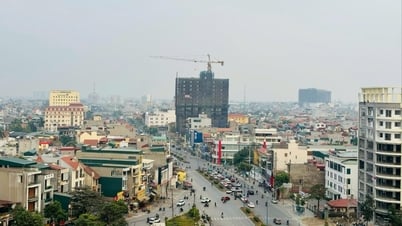









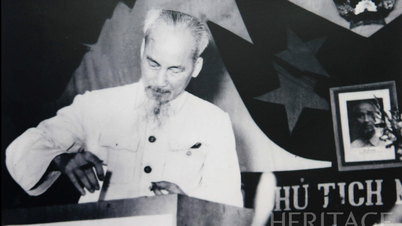


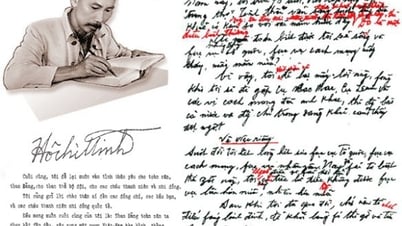






























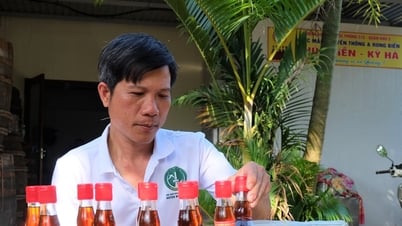





















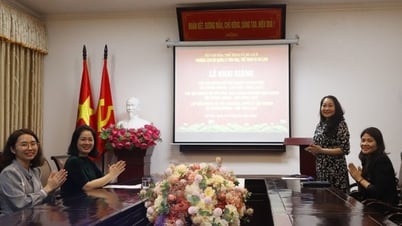





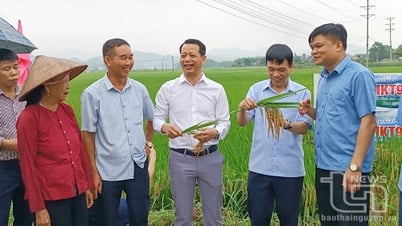





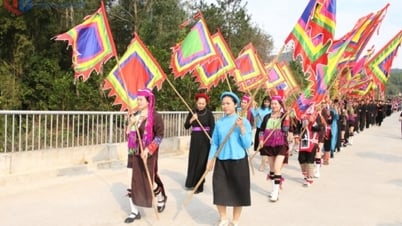











Comment (0)